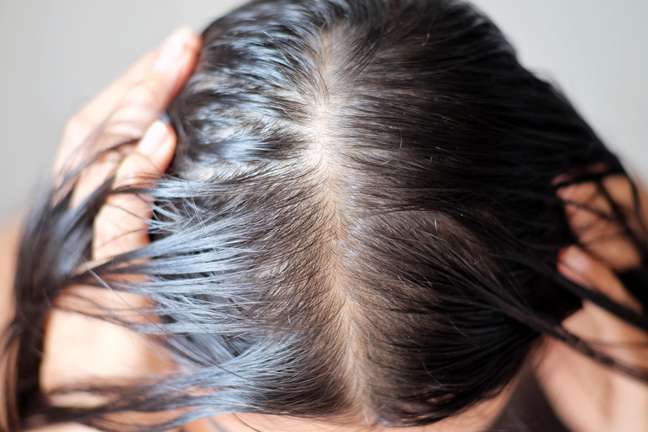Understanding what alopecia is, the different types of hair loss and the forms of treatment
There has been a lot of talk about alopecia on the internet – after all, many women face this condition on a daily basis. However, even with the popularity of the topic – hair loss is quite common and can occur for a variety of reasons – it is important for us to understand what, exactly, defines this condition.

AFTER ALL, WHAT IS ALOPECIA?
Alopecia is a broader term that defines all types of hair loss. In essence, it is a disturbance caused by an interruption in the yarn production cycle.
“Hair loss can occur anywhere on the body, but it most commonly affects the scalp,” explains the trichologist. Sandra Perondi , technical director Mais Cabello. “On average, the scalp has 100,000 hairs that go through periods of growth, rest, shedding and regeneration. About 50% of women have some complaints about hair loss. Among men, it is certain that 50% of the male population he reaches the age of 50 suffering from some type of alopecia “.
What is important to understand at this point is that every single hair loss situation can be defined as alopecia, however, the evaluation of a specialist doctor, such as a trichologist or a dermatologist, is necessary to determine exactly the reasons that lead to this loss. .
“There are many types and forms of alopecia, each with their own symptoms and varying degrees of severity,” explains the doctor. “Some hair loss patterns are classified according to their causes, ranging from temporary ‘non-scarring’, which is reversible, to permanent and irreversible ‘cicatricial alopecia’, which involves inflammation that destroys hair follicles.”
In the latter case, the destroyed follicles are replaced by scar tissue, resulting in permanent hair loss in the area – this case, however, is not as common.
MOST COMMON TYPES OF ALOPECIA
However, it is worth listing here which, after all, are the most common types of alopecia.
androgenetic alopecia
“It is the most common type of hair loss, affecting millions of people in Brazil and around the world, commonly known as male pattern hair loss or female pattern hair loss. Androgenetic alopecia is hereditary,” he says.
telogen effluvium
One of the most common causes of hair loss, this condition is usually triggered by phases of stress, childbirth, anxiety, depression, pain, or some type of illness, such as the coronavirus. What is observed is a notable type of hair loss, especially when washing the strands, combing or even in environments where the person circulates. The hair becomes thinner on the sides and also in the frontal region.
anagen effluvium
“Usually caused by anticancer drugs, anagen effluvium causes patchy hair loss and eventually total hair loss (usually regrows after treatment is completed),” explains Sandra.
alopecia areata
It is an autoimmune condition that causes the body’s immune system to attack the hair follicles, leading to irregular hair loss. This condition can affect all ages and genders, and hair loss can begin suddenly and without warning. It usually falls in small patches, most commonly on the scalp, but can affect other parts of the body.
trichotillomania
“It’s dermato-compulsion, which means people pull their hair out and that results in loss on the scalp or other parts of the body. Hair usually grows back if the behavior is stopped, but hair loss can be permanent if the traction continues for many years, “says the doctor.
traction alopecia
It is caused by hairstyles that pull the hair continuously and for a long time and this excessive force removes the strands, which can cause damage to the hair follicle.
Frontal fibrosing alopecia
“This condition is characterized by cicatricial alopecia, which is permanent irreversible loss, and occurs in a band, usually in the anterior hairline,” he explains. “Over time, a person begins to feel that their forehead is getting bigger. About half of all people with frontal fibrosing alopecia also experience eyebrow loss.”
WHEN TO SUSPECT ALOPECIA?
From the previous paragraphs, it is already possible to see that alopecia is a very common condition and it is not that difficult to notice it. The main thing is to observe the amount of hair falling out every day – there is a common average of 100 strands, but above it can already be considered a cause for concern.
In summary, some of the main signs are:
- Hair falls out faster, more or in clumps
- Transparency in the bitemporal region (on the sides)
- Appearance of an indented hairline on the forehead (forehead appears larger)
- Thinner and more fragile threads
- Extension of the central division
From there, only the evaluation of a dermatologist or trichologist can define the best treatment, which can include microneedling associated with injecting vitamins into the scalp, hair transplants, use of topical medications, administration of supplements, oral medications and massage.
DO I NEED TO TREAT ALOPECIA FOR MY LIFE?
It depends on the type of alopecia. Cases such as telogen effluvium resolve on their own, meaning the hair grows back after excessive loss. “But the important thing is to know that the effectiveness of each treatment varies from person to person, knowing that it is possible to reverse hair loss or, at least, to delay it. To delay the process, it must be treated,” says the doctor. . .
However, it is important to keep in mind that some alopecias have no cure. The possibilities, in these cases, are limited to controlling the condition and delaying its action, as well as adopting good habits to keep the body (and mind!) Healthy. Therefore, this condition works like a rush with time: the sooner the patient begins treatment, the greater the chances of a response.
Source: Terra
Benjamin Smith is a fashion journalist and author at Gossipify, known for his coverage of the latest fashion trends and industry insights. He writes about clothing, shoes, accessories, and runway shows, providing in-depth analysis and unique perspectives. He’s respected for his ability to spot emerging designers and trends, and for providing practical fashion advice to readers.








